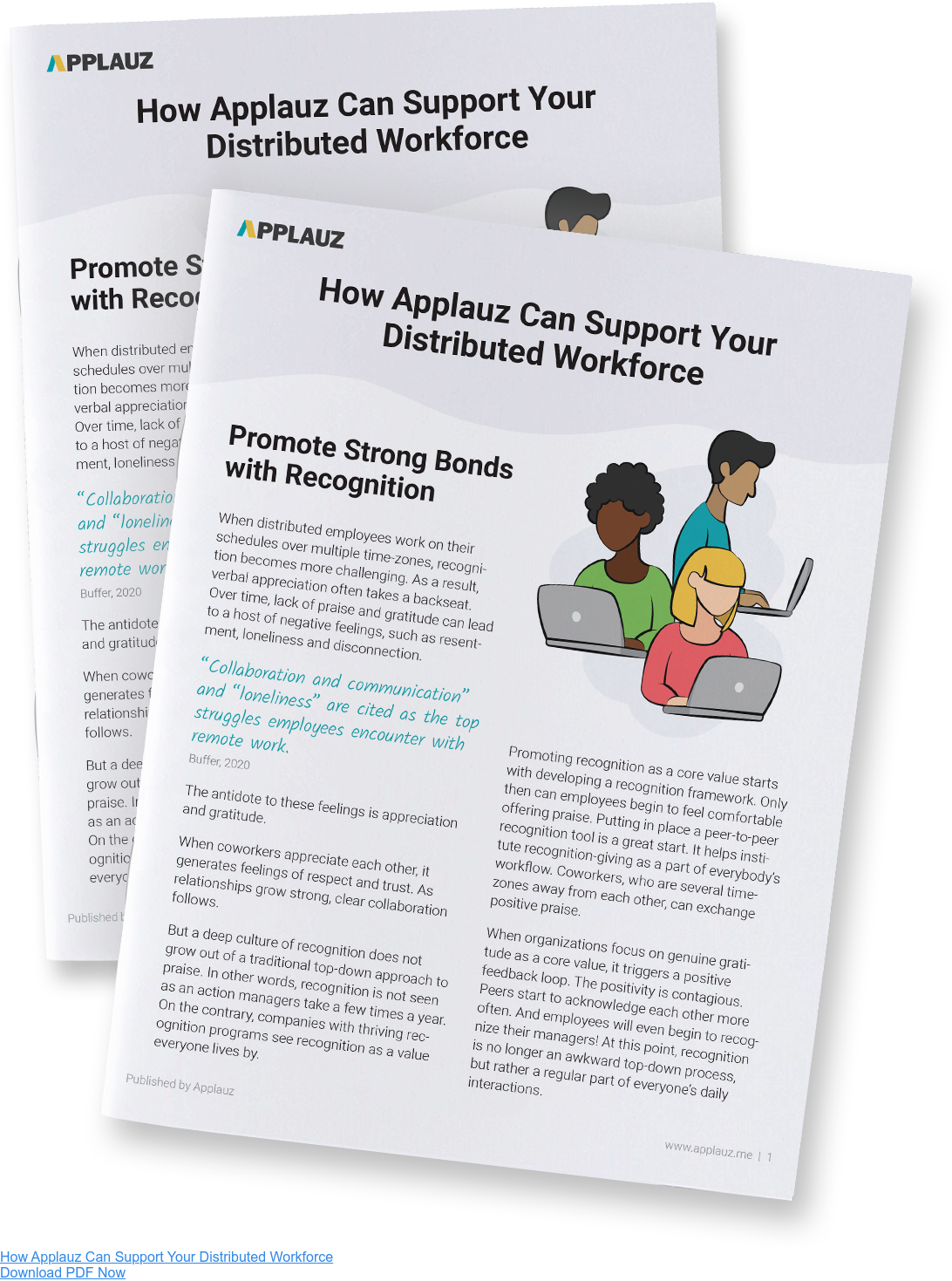The coronavirus pandemic has reshaped the modern world and ushered in an era of remote work that few could have predicted. What was once considered a temporary response to a global crisis is now the new normal. As we move beyond the pandemic, it's essential to take stock of this new landscape by looking at the trends emerging from the data--and the remote work statistics that provide insight into this new era of the modern office.
In this analysis, we will explore remote work statistics and the trends they reveal, offering insights into the current state of remote work and its potential future. From the rise in remote job opportunities to the impact on employee happiness and the environment-- the world of work has changed fundamentally. Let’s dive into the data and the multifaceted world of remote work.
Remote Work Opportunities Have More Than Tripled From Prior to the Pandemic
The pandemic accelerated a trend that was already in motion: the rise of remote work opportunities. A study by Stanford University finds that before the pandemic, remote work made up a modest 4% of the total available jobs in the United States. Fast forward to today, and remote jobs now constitute more than 15% of the total opportunities in the U.S.
Furthermore, WFH Research finds a total of 12.7% of full-time employees work from home and 28.2% work in a hybrid model. When it comes to corporate adoption of the new trend 16% of companies are fully remote (without any physical office) while conversely, 44% of companies still do not allow any remote work.
This shift illustrates not only the adaptability of businesses but also the growing acceptance of remote work as a viable option for most, but not all, employers and employees.
Remote Work Mental Health Statistics Reveal Remote Employees Are Happier
One of the most significant revelations of the remote work era is its impact on employee happiness. Research by Owl Labs reveals that a staggering 74% of employees report feeling happier when they work remotely. The reasons behind this newfound happiness are diverse. Global Workplace Analytics finds that employees save between $2500 to $4000 per year by working from home and save an average of 40 minutes per day from commuting.
This might account for the findings that 50% of surveyed employees would willingly accept a pay cut if it meant they could continue working remotely (23% indicating they would take a pay cut up to 10%). This data underscores the profound shift in employee preferences and suggests that a return to the traditional office model may not align with the desires of the workforce.
Remote Work Trends Suggest Remote Work is Here to Stay
The remote work experience has left a positive impression on the vast majority of employees. According to Buffer's State of Remote Work report, a remarkable 98% of people would recommend remote work to others. This trend remains consistent over time, with only minor fluctuations. Additionally, 98% of remote employees express their desire to continue working remotely throughout their careers.
These statistics send a clear message to employers: remote work is not a passing phase. An Upwork study predicts that 22% of all workers will be remote by 2025. This indicates that companies should start strategizing for the reality of a remote work future if they haven’t already.
Remote Work Can Still Have Drawbacks for Employees
While remote work offers many benefits, it is not a panacea for workplace challenges. Research by Monster indicates that 69% of remote employees experience burnout, revealing that this issue persists even in a remote work setting.
Remote work may alleviate some stressors, such as commuting and rigid schedules, but it introduces new challenges, including managing workloads, setting boundaries, and avoiding overwork. To support remote employees' well-being, businesses must proactively address burnout by promoting work-life balance and providing resources for mental health.
Businesses Save Money by Adopting a Remote Work Model
Beyond its impact on employees, remote work has significant financial implications for businesses. Research conducted by Harvard suggests that companies can save up to $18,000 per employee annually by adopting a hybrid or fully remote work model. These savings result from reduced overhead costs, including office space, utilities, and insurance expenses. On top of that, a survey by Owl Labs found that less than 25% of companies pay for their employees’ home office expenses.
There could be more hidden savings as remote work fosters employee productivity and engagement, reducing the likelihood of turnover and absenteeism.
Remote Work Productivity Statistics Show Remote Employees Work Longer
The feeling of staring at the clock in the office on a Friday afternoon is familiar to many. It turns out that this phenomenon is less prevalent for remote workers. A Nature Human Behaviour study finds remote employees work 10% more hours than in-office employees. Furthermore, the Owl Labs study found that the number of remote employees working more than 40 hours per week is 43% higher than in-office employees.
One can speculate that because the strain of commuting is lifted when working remotely there is less trepidation about working past the bell. Whatever the reason, the on average 4 more hours of work per week that remote workers perform is certainly beneficial for productivity.
Remote Employees are More Loyal
One intriguing aspect of remote work is its potential to boost employee loyalty. According to Remote Co’s Work and Financial Wellness Report, 63% of participants in a research study stated that they would look for new jobs if not offered flexible remote work options. In an era where employee retention is critical, remote work can be a powerful tool for staff retention. It can also help attract new prospects as having remote work as an option is very enticing when potential new employees are hunting for jobs. The Owl Labs survey reports that 59% of employees would choose a company that offers remote work over one that doesn’t.
However, a one-size-fits-all approach to remote work may not be ideal. To maximize engagement and loyalty, companies should tailor their remote work policies based on employee preferences, as what works for one organization may not be suitable for another.
Remote Work Has Major Environmental Benefits
Remote work has environmental benefits that extend beyond financial savings. Commuting to and from work contributes to carbon emissions and traffic congestion. Research by Spain's Institut de Ciència i Tecnologia Ambientals suggests that adopting a four-day remote work week could reduce overall CO2 emissions by 10%. In some cases, pollution levels can drop by up to 80% when employees work from home instead of commuting. Since 2020 video call meetings have increased by 50%, further reducing the need for commuting.
Additionally, remote work reduces the need for office-related resources like paper and office furniture. While the sudden shift to remote work in 2020 led to a surge in home office setups, the long-term environmental impact remains positive.
Remote Workers Are Less Likely to Take Sick Leave
Another unexpected benefit of remote work is the reduction in sick leave. Employees are less likely to take sick days for minor illnesses when working from home. A survey by OnePoll indicates that 70% of employees worked while ill during the pandemic rather than taking sick leave.
This phenomenon, known as "presenteeism," may seem advantageous to employers at first glance. However, it can lead to decreased employee productivity and a higher likelihood of employees spreading illness to colleagues. To address this issue, businesses should establish clear sick leave policies and encourage employees to prioritize their health.
Remote Work Cybersecurity Statistics Indicate a Significant Rise in Risk
It seems that not all the kinks of remote work have been ironed out. Statistics show that company data and networks are safer from cyber attacks when managed on company sites. A report from Gitnux states that 66% of organizations see an increased cybersecurity risk when utilizing a remote work model. They also report that 60% of remote workers use unsecured devices for company work.
With time companies are devising ways to make remote work more secure. For instance, the same study indicates that 94% of firms see a security boost by using cloud technology. There is room for improvement and expect companies to develop secure solutions for remote work in the near future.
What Remote Work Statistics Can Teach Us About the Hybrid Model
As businesses consider the future of work, many are grappling with the idea of hybrid work arrangements. While hybrid models aim to provide flexibility while maintaining in-person collaboration, they come with their own set of challenges.
Research by TinyPulse indicates that 80% of people find hybrid setups to be exhausting and emotionally draining. The constant shifting between home and office environments can disrupt routines and create logistical challenges for employees.
To successfully implement a hybrid model, companies should carefully consider the unique needs and preferences of their workforce. Pulse surveys and feedback from employees can help tailor hybrid arrangements to maximize both productivity and well-being.
The Workplace of Tomorrow and the Importance of Employee Recognition
The post-Covid business landscape has ushered in a new era of remote work, reshaping the way we approach our professional lives. Remote work statistics reveal not only the benefits of flexibility and financial savings but also the importance of addressing challenges like burnout, employee engagement and the need to intentionally develop your company’s remote work culture.
Employee Recognition software, like Applauz, can help companies build a positive work culture that transcends the physical presence of employees in an office, ensuring that your company does not miss a beat--regardless of whether your employees are remote or in the office.
In this dynamic environment, adaptability and a focus on employee well-being will be the keys to success. By embracing the lessons of the pandemic and harnessing the power of employee recognition, businesses can thrive and adapt to the new era of the modern workplace.



